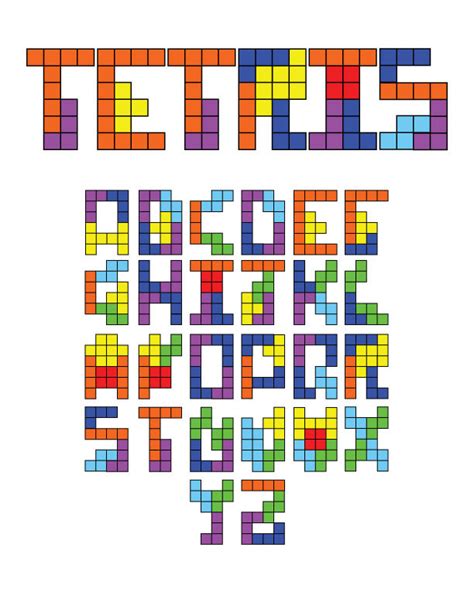Imagine a world where the simplicity of Tetris pieces lends itself to the complexity of typographic design. This fascinating marriage of Tetris and typography brings a new dimension to how we perceive fonts. The Tetris Font, a novel typeface, integrates the simplicity of the seven Tetris shapes—namely I, J, L, O, S, T, and Z—to form letters and digits. This innovative approach does not merely place these shapes together haphazardly; rather, each letter is constructed by stacking these pieces in a way similar to how one plays Tetris. The designs are carefully orchestrated so that each piece logically supports the next, ensuring structural integrity within the confines of Tetris rules.
This ingenious design was brought to life thanks to BurrTools software, which the creator used to manually search for ways to fit Tetris pieces into candidate outlines for letters. This approach allowed for precision and a hands-on creative process, yielding fascinating outcomes. However, a recurring theme in community feedback, such as that offered by user andrei-akopian, highlights a desire for the font generation process to be more automated. A shift towards automation might indeed sacrifice a bit of quality but would offer interesting characteristics like lowercase letters and broader symbol support. Automation could also infuse each letter with unique characteristics, thereby preventing the monotony of repeated letter shapes.
An interesting enhancement, noted by users, was the implementation of random build orders for repeated letters and words. The original design saw all letters formed in a consistent manner, which, while reliable, lacked variability. This feature was particularly appreciated for its ability to provide a fresh visual experience each time the same text is rendered. As user edemaine implemented this suggestion, it underscored the project’s dynamism and the potential for community-driven improvements. You can try the random build order feature by entering repeated characters at this [URL](https://erikdemaine.org/fonts/tetris/?text=aaaaa&rotate=0&speed=4).
From a developer’s perspective, the Tetris Font opens up avenues for creative coding and algorithmic challenges. One user, muth02446, referenced their own project which, while allowing non-Tetris pieces, dove into similar territory of creating visual works out of game mechanics. Another noteworthy project came from Erk, who reversed the concept by embedding WebAssembly programs to make a font that plays Tetris. This playful experimentation showcases just how versatile and engaging the marriage of game mechanics and typographic constraints can be.
The thoughtful orchestration of such innovative ideas doesn’t go without caveats. Several users suggested potential improvements such as generating letters based solely on valid Tetris moves without needing to use all pieces exactly once. This could introduce even more variability and creative freedom. Moreover, specifics like ensuring the URL for shared text does not reveal input text for privacy, and adding a delay feature or checkbox to pause the animation, were some of the more practical and user-experience-centric suggestions. As feedback loops solidify, these community-led enhancements can drive the project’s evolution, making it versatile and user-friendly.
In conclusion, the Tetris Font stands as a testament to the creative possibilities that arise when blending computational algorithms with artistic design. While it already captivates audiences with its innovative approach, the potential for future enhancements packs enough excitement to keep developers and typographers eagerly watching. As we unravel more ways to blend art with logic, projects like these not only showcase what’s possible but inspire further explorations into unconventional design paradigms. To explore more about this innovative effort, visit the [Tetris Font page](https://erikdemaine.org/fonts/tetris/).


Leave a Reply